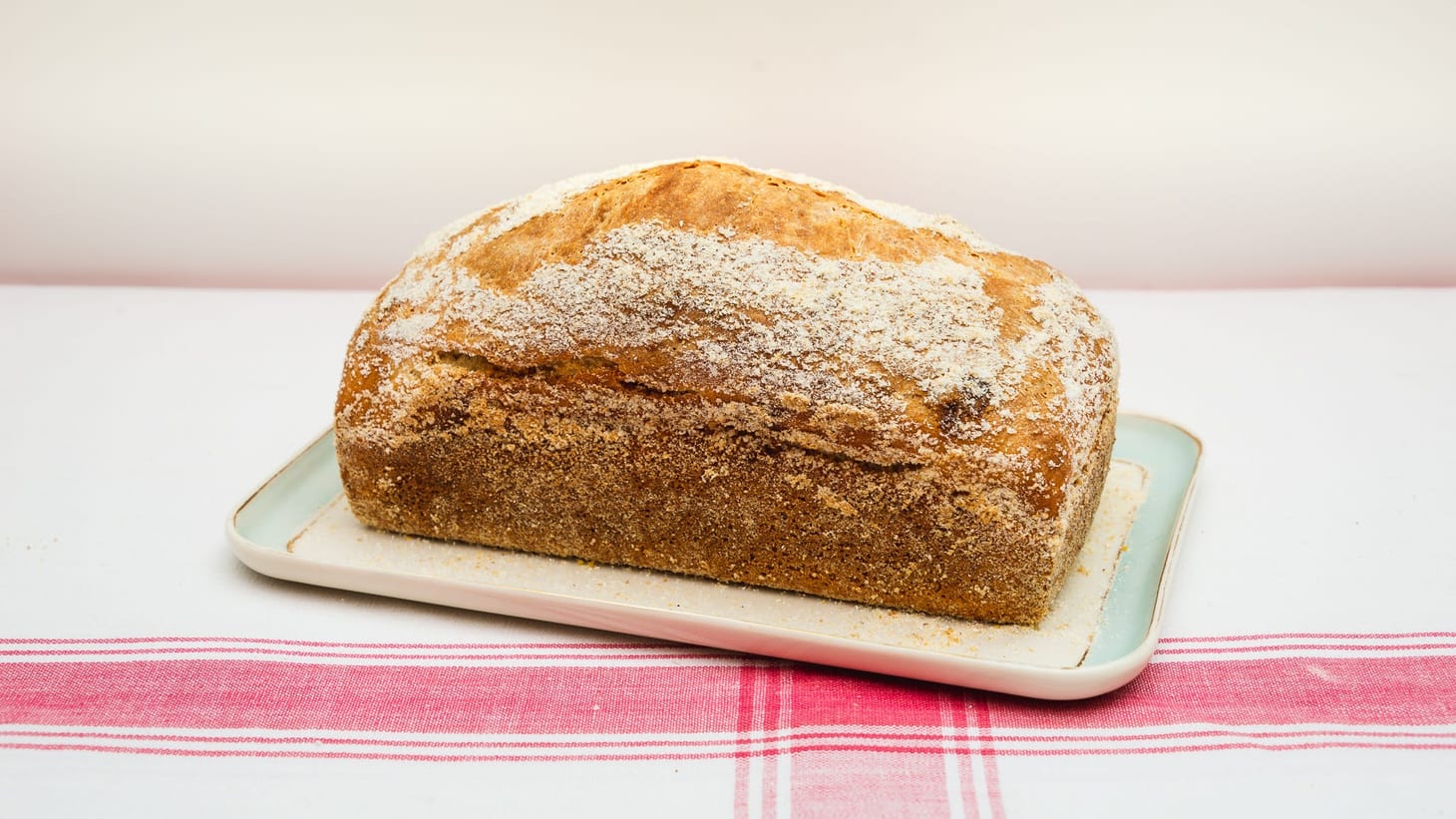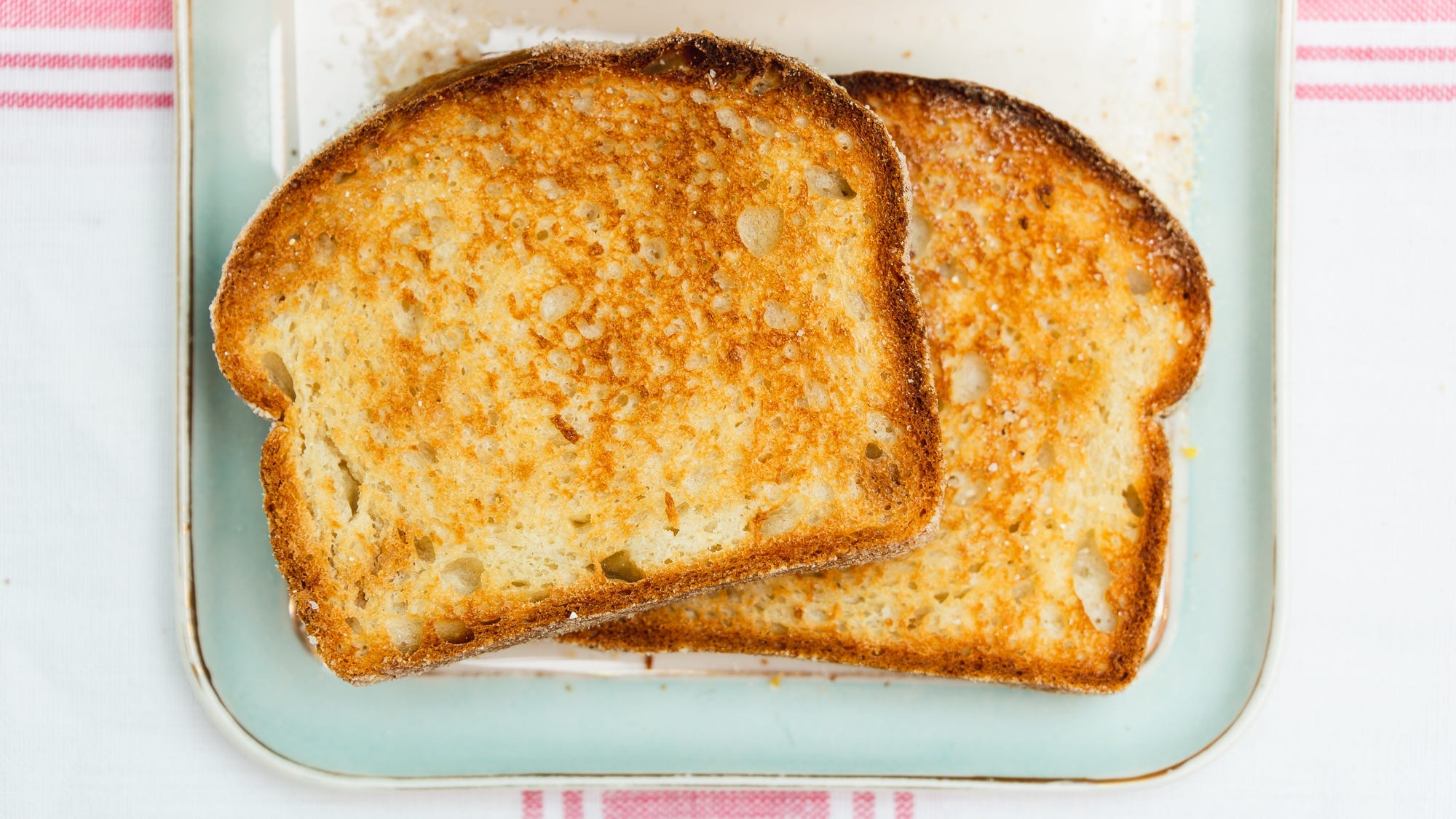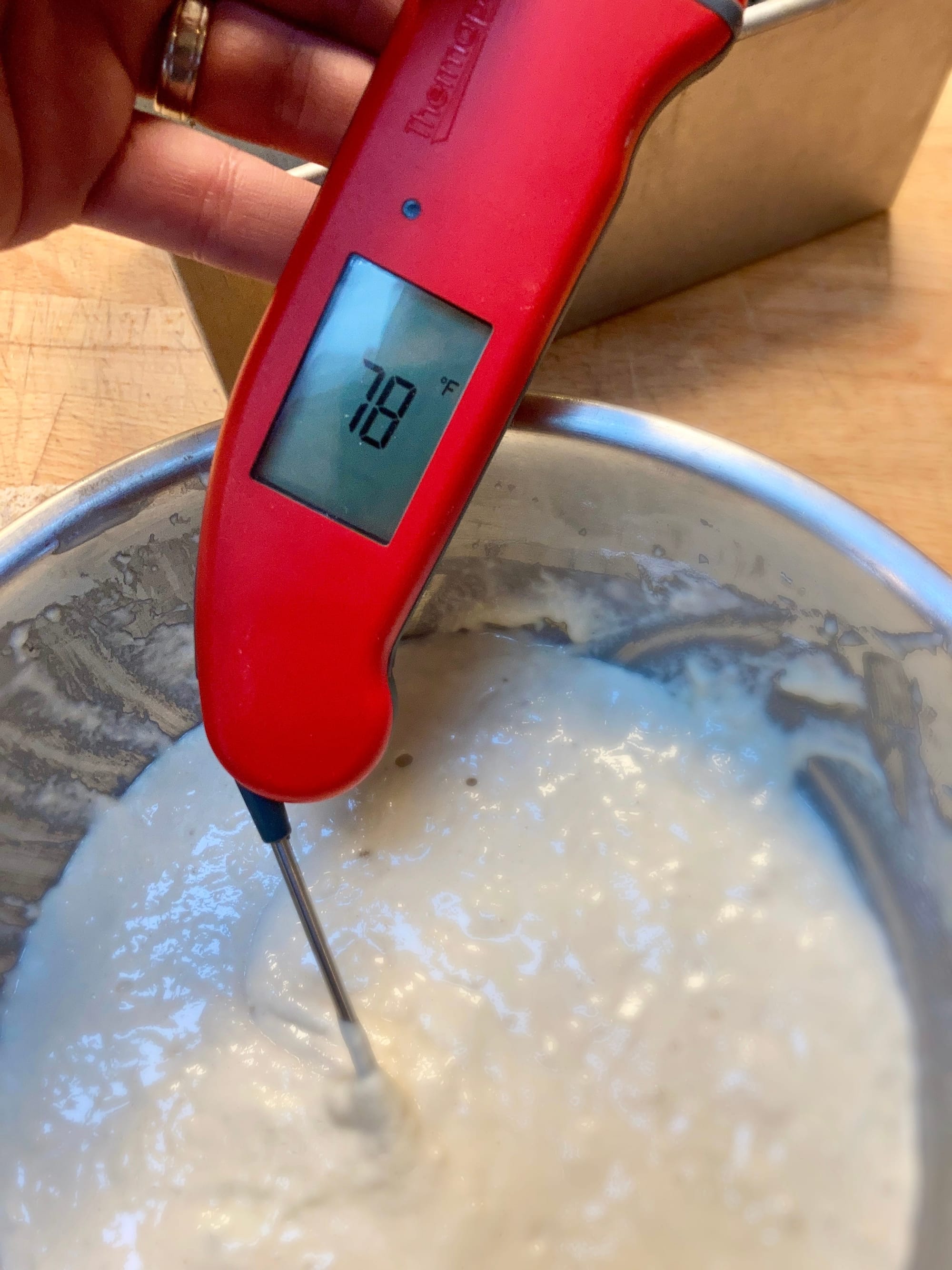Recipe: Sourdough English Muffin Bread
or: putting DDT theory to the test!

Table of Contents
This week’s recipe combines two recent topics—sourdough discard and desired dough temperatures—into one delicious and stupid-easy loaf. Basically, it’s a pan bread with the tangy flavor, open crumb structure, and cornmeal-crunchy-crust of English muffins. It’s made with an extremely high ratio of sourdough discard—50%, meaning half of the flour is prefermented. Since it calls for so much discard (400g) I’ve included a levain build step, in case you don’t have that much on hand (you can also use a combination of both if need be). (I just cleaned out my discard jar completely myself doing a few last tests on it.)

A (yeasted) version of English Muffin bread appears in James Beard’s Beard on Bread, a book I hadn’t paid much attention to before now because it had always seemed dated to me. But right now I’m midway through John Birdsall’s wonderful new biography of Beard, The Man Who Ate Too Much, and I have a renewed appreciation for the man, so I’ve been giving it another look. I’m not sure where Beard got his recipe for English muffin bread, but it’s pretty similar to other versions published since.
This is midway between a quick bread and a fermented one, since it contains a bit of baking soda to react to the acids in the sourdough and open up the crumb structure. After mixing, it ferments for only about 90 minutes, just long enough for the dough to about double in volume before baking. Which makes it perfect for when you want a sourdough bread in a relative hurry (provided you have enough discard on hand already, that is).

It’s also one of the rare breads I think benefits from toasting even when freshly baked, since it has a very moist crumb and toasting ups the overall English-muffin-ness of it. (Normally, I’d give the evil eye to I anyone wanting to toast my gloriously-textured breads on day one or two, but in this case I will make an exception.)
The fact that this recipe uses so much discard also makes it a perfect opportunity to put that desired dough temperature method I explained the other day to the test. Remember how I said that the ratio of preferment in the dough can have a dramatic impact on the final dough temperature? Normally, we use the DDT formula to reduce the impact of the preferment factor, since it’s usually there in a far smaller ratio than most other components.
But in this case the ratio of discard is actually 200%, relative to flour, so it has a major impact on the final dough temperature, especially when using the discard straight from the fridge. The first time I ran a DDT calculation on this dough I did a double-take, since it called for milk heated to 163˚F. I was deeply skeptical, sure the dough would end up way hotter than I wanted it to, but I rechecked the math, held my nose, and mixed the dough.
And sure enough, the final dough temperature was exactly where I wanted it to be:

Turns out the math works! Who knew?
As a reminder, here’s the formula:
DDT = 75 (yeasted breads)
DDT = 78 (sourdoughs)
Friction Factor = 5 (hand mixed)/25(stand mixer)/30(food processor)
A = 75 or 78 - [flour temperature]
B = 75 or 78 - [room temperature]
C = 75 or 78 - [friction factor]
D = (75 or 78 - [preferment temperature]) x [preferment %]
A + B + C + D = Final water temperature And here are my muffin bread numbers:
A = 78 - 68 [flour temperature] = 10
B = 78 - 68 [room temperature] = 10
C = 78 - 5 [friction factor/hand mix] = 73
D = (78 - 43 [preferment temp]) x 2.00 [preferment %] = 70
10 + 10 + 73 + 70 = 163˚F One last note about the DDT formula for the time being: Please don’t let it stress you out, especially if you’ve never used it before. The point of the formula is to give a baker more control over dough temperatures and fermentation, if desired. If you’ve been getting by just fine without giving much thought to dough and water temperatures up until now, then you can certainly carry on as usual. I’ll be including desired dough temps in my formulas here from now on, but I don’t think you absolutely need to adhere to them for success. Not doing so could slow down or speed up fermentation beyond the time frames I provide, but I also always include a visual indicator as a backup (“until doubled in volume”, or something along those lines). Even if you don’t use the formula to set your dough temperature, you’ll still have a sense of how warm (or cool) the dough is meant to be.
That said, I encourage you to at least practice calculating DDT with this recipe, especially if you are using sourdough discard from the fridge. Let me know how it works for you—both the formula and the recipe—in the comments below!
—Andrew
Find the latest version of this recipe here!
Sourdough English Muffin Bread
Makes one 800g 9x5-inch loaf
This recipe can be made with sourdough discard or freshly-made levain, or a combination of the two. If using levain, keep in mind the recipe below makes—as all recipes should—slightly more than you’ll need in step 2; save the excess for the next batch. Because it uses a high ratio of sourdough, you’ll need to warm the milk accordingly to get the dough to 78˚F, particularly when using cold sourdough discard, using this formula. If you don’t have milk on hand, you can also use water instead, along with 30g (1/4 cup) dry milk powder.
Overall Formula
Bread flour 100%
Milk/water 88%
Sugar 1.5%
Baking soda 1%
Salt 2%
(Levain 200%)
(Prefermented flour 50%)Levain Build (if needed)
170g bread or high-protein all-purpose flour
170g water
85g starterFinal Formula
200g bread flour
6g sugar (1 teaspoon)
8g salt (1-1/4 teaspoons)
150g milk
400g 100% hydration levain (from above) or sourdough discard
4g baking soda (1/2 teaspoon), dissolved in 2 teaspoons water
LEVAIN BUILD (if needed): Stir flour, water, and starter until uniform and proof at 78˚F until at least doubled in volume, 4 to 8 hours.MUFFIN BREAD: Desired dough temperature: 78˚F.Grease 9- by 5-inch loaf pan(preferably metal for maximum conductivity)and dust liberally with cornmeal. Whisk flour, sugar, and salt in bowl until evenly combined. Add milk, levain, andbaking soda solution, and stir until fully combined. Cover and let rise at 78˚F until dough is bubbly and has about doubled in volume, 60 to 90 minutes.Stir dough and pour into loaf pan. Cover pan loosely and set aside. Adjust oven rack to middle position and heat oven to 375 degrees.When oven is at temperature, dust top of loaf liberally with cornmeal and transfer pan to oven. Bake until bread is risen, golden-brown on top, and registers at least 200˚F at center, 35 to 40 minutes. Transfer pan to rack and allow to cool for 5 minutes. Remove loaf from pan and return to rack. Let cool at least 1 hour before slicing.
wordloaf Newsletter
Join the newsletter to receive the latest updates in your inbox.





